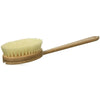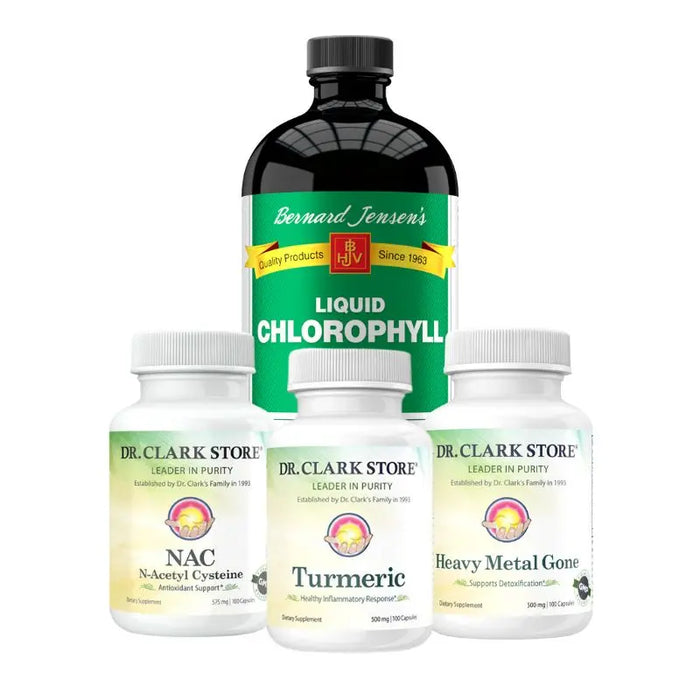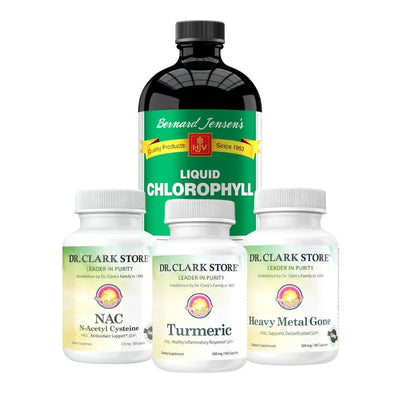Microplastics Detox Kit
Microplastics Detox Kit
How to Detox Microplastics with the Microplastics Detox Kit
Understanding Microplastics in Our Bodies
Microplastics are tiny plastic particles that have infiltrated our environment, and they can easily enter our bodies through food, water, and even air. Because of this, understanding how to detox microplastics is essential for maintaining good health. Our Microplastics Detox Kit is specifically designed to help eliminate these particles, ensuring that your body stays free from harmful toxins that can lead to serious health issues. This kit provides the necessary vitamins and supplements tailored to support your body's natural detoxification processes.
How to Detox Microplastics
This kit is designed to improve the body’s detoxification mechanisms specific to the toxicity induced by microplastics and nanoplastics. Microplastic contamination and heavy metal contamination go hand-in-hand, and studies have shown that the microplastics serve as a vector for heavy metals. According to research, particles from polyethylene (shopping bags) and polyethylene terephthalate (plastic water bottles) bind to metals including chromium, iron, bismuth, beryllium, indium, tin and rare-earth elements. In one study, it only took one hour for the metals to attach, and the smaller the particle, the more metal accumulation occurred (Chen et al., 2024). For this reason, this kit includes heavy metal cleansing ingredients that will also target microplastic accumulation in tissues and damage caused by the endocrine disrupting effects of plastic in our bodies and environment.*
Key Ingredients and Benefits:
Heavy Metal Gone: Helps removes microplastic complexes that combine with heavy metals.* Aluminum and other heavy metals have a high affinity to microplastics to which they attach, and then are carried throughout the environment (Gao et al., 2021).
Chlorophyll: Chlorophyll has been found to help the body detoxify BPA and other estrogenic compounds in plastic (Martins et al., 2023). It has also been shown to support metabolic functions and enhance immune responses, which are crucial for maintaining hormonal balance.* Phytochemicals, including chlorophyll, can regulate reproductive hormones and menstrual cycles, potentially improving female reproductive health.* Chlorophyll exhibits anti-inflammatory and antioxidative effects, which may mitigate oxidative stress linked to the estrogen disruption caused by microplastics.*
N-Acetyl Cysteine (NAC): Microplastics are known to cause a variety of toxic effects, and NAC helps the body resist all of them.* One recent discovery was that nanoplastic has been found to promote the kinetic aggregation of amyloid beta plaques implicated in Alzheimer’s and other diseases (Liang, et al., 2024). A recent 2025 study on N-Acetyl Cysteine (NAC) found that it downregulated gene transcription for the amyloid precursor proteins, and minimized protein accumulation.*
Turmeric: Turmeric has been found in studies to restore damage from micro- and nanoplastics through multiple mechanisms.* Studies have found that microplastics result in toxic damage to the immune system, brain, thyroid, liver, lungs, GI tract, and endocrine system, but that curcumin in turmeric was associated with the restoration of all oxidative damage induced by microplastics (Mashayekhi-Sardoo, et al, 2024).
This Unique Kit includes 4 items:
Heavy Metal Gone Capsules (Himalayan shilajit, EDTA, chlorella (Chlorella vulgaris), turmeric root (Curcuma longa), L-methionine, N-acetyl cysteine, cilantro (Coriandrum sativum), thioctic acid, gelatin (bovine) capsule)
Liquid Chlorophyll (water, sodium chloride, glycerin, chlorophyllin copper complex (from alfalfa leaf))
N-Acetyl Cysteine Capsules (N-acetyl cysteine, SelenoExcell high selenium yeast, molybdenum, gelatin (bovine) capsule)
Turmeric Capsules (organic turmeric (Curcuma longa) root, gelatin (bovine) capsules)
Instructions
For general maintenance and support for detoxifying microplastics:
Heavy Metal Gone: Take 1 capsule a day.
Chlorophyll: Take 1 tablespoon mixed in water twice a day.
NAC: Take 1 capsule twice a day.
Turmeric: Take 1 capsule a day.
Resources
Chen, P. W., Hsiao, M. N., Xiao, L. W., & Liu, Z. S. (2024). Adsorption behavior of heavy metals onto microplastics derived from conventional and biodegradable commercial plastic products. Science of The Total Environment, 951, 175537.
Gao, X., Hassan, I., Peng, Y., Huo, S., & Ling, L. (2021). Behaviors and influencing factors of the heavy metals adsorption onto microplastics: A review. Journal of Cleaner Production, 319, 128777.
Liang, X., Andrikopoulos, N., Tang, H., Wang, Y., Ding, F., & Ke, P. C. (2024). Nanoplastic Stimulates the Amyloidogenesis of Parkinson's Alpha‐Synuclein NACore. Small, 20(14), 2308753.
Martins, T., Barros, A. N., Rosa, E., & Antunes, L. (2023). Enhancing health benefits through chlorophylls and chlorophyll-rich agro-food: A comprehensive review. Molecules, 28(14), 5344.
Mashayekhi-Sardoo, H., Sepahi, S., Ghorani‐Azam, A., Askarpour, H., Johnston, T. P., & Sahebkar, A. (2024). Protective effect of curcumin against microplastic and nanoplastics toxicity. International Journal of Environmental Health Research, 1-40.
*Disclaimer: These statements have not been evaluated by the Food and Drug Administration. This product is not intended to diagnose, treat, cure, or prevent any diseases. As with any dietary supplement, you should consult with a qualified healthcare professional if you are pregnant or nursing, if you have any medical condition, or if you are taking any medication before using this product. Always consult with a healthcare professional before giving supplements to children. Please read full disclaimer here.
Coupon (discount) codes are not applicable on product subscriptions. The subscription price is already discounted from the one time purchase price.
Benefits of Detoxing Microplastics
Detoxing microplastics not only contributes to overall health but can also enhance your well-being. Regular detox helps improve digestion, boost immunity, and increase energy levels. Additionally, by using our detox kit, you're actively participating in protecting your body from the adverse effects of microplastics. The carefully selected ingredients in our kit work synergistically to promote optimal health, making it an essential part of your wellness routine.
How to Use the Microplastics Detox Kit
To effectively detox microplastics, follow the instructions provided with our kit. Typically, you will take specific vitamins and supplements for a set period. You will notice improvements in your energy and overall well-being after regular use. Remember, it's important to stay hydrated and eat a balanced diet to support the detox process further. Our Microplastics Detox Kit simplifies your journey toward a healthier, microplastics-free lifestyle.
Understanding Microplastics
Microplastics are tiny plastic particles that measure less than 5mm. They can enter our bodies through various means, such as contaminated food and water. Because microplastics can disrupt bodily functions, it’s essential to find ways to reduce their impact. Our Microplastics Detox Kit offers a comprehensive approach to help flush out these harmful substances. By utilizing the right vitamins and supplements for detoxification, you can begin to feel more energized and healthy.
The Benefits of Detoxification
Detoxification with our kit not only helps eliminate microplastics but also promotes overall wellness. It contains essential vitamins and supplements that boost your body's natural detox process. Regularly detoxing is beneficial, but the Microplastics Detox Kit is specifically designed to target these plastics. As a result, you may notice improved digestion, enhanced mood, and even increased energy levels, all of which contribute to a healthier lifestyle.
How to Use the Microplastics Detox Kit
Using the Microplastics Detox Kit is straightforward and convenient. First, read the instructions included in the kit and follow the recommended dosage. Incorporate the supplements into your daily routine and maintain a balanced diet rich in fiber. Hydration is also crucial; so, drink plenty of water to support your detoxification process. With consistent use, you will experience all the benefits that come from detoxifying your body from microplastics.






















